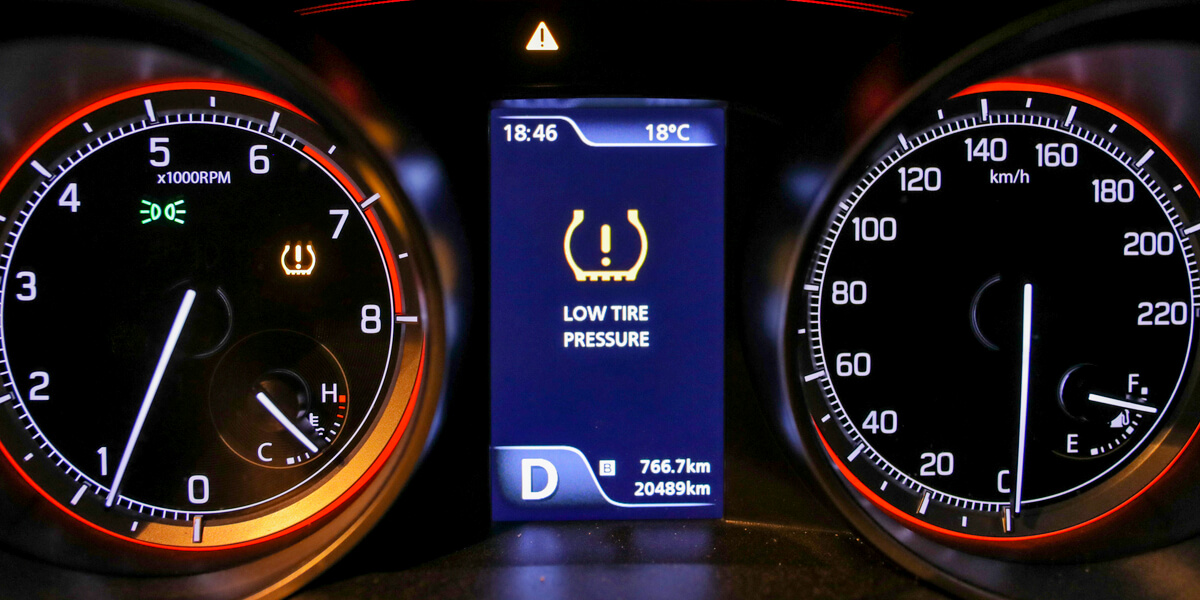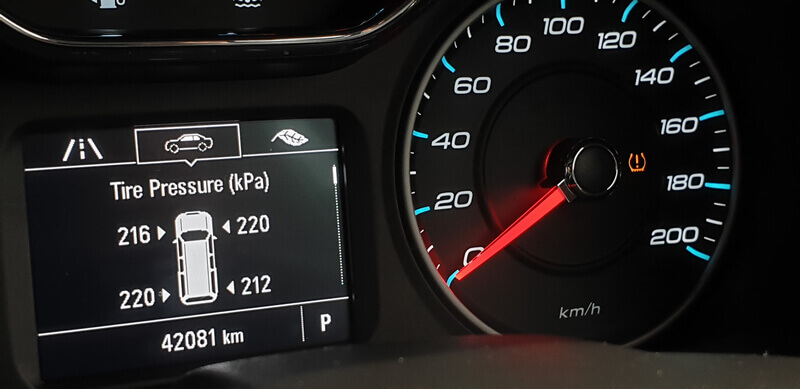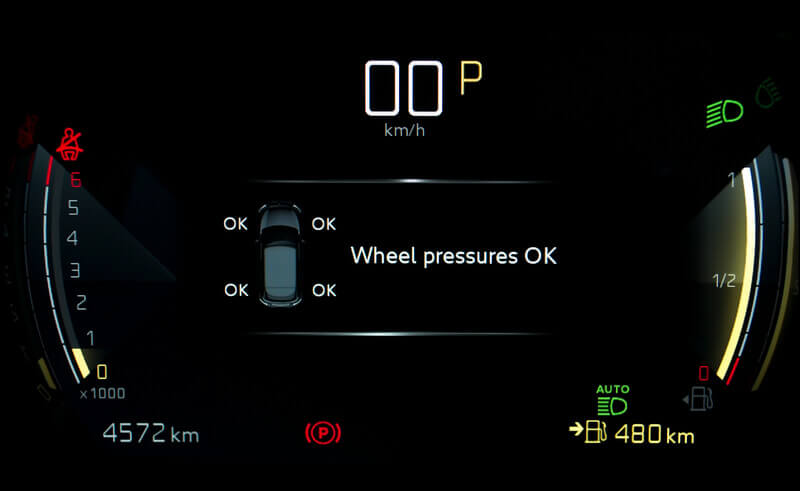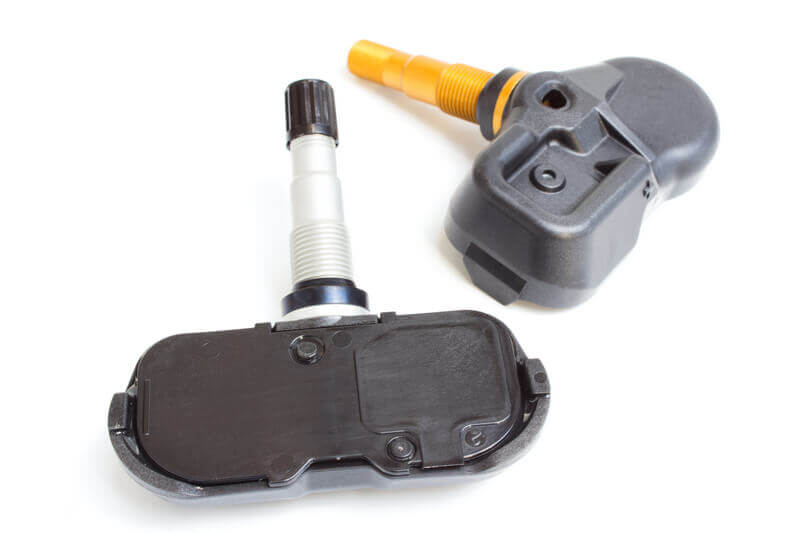
Tire pressure monitoring systems (TPMS) are standard in today’s cars, keeping your tires inflated and your fuel efficiency in check. Underinflated tires don’t just wear out faster—they eat up gas too. So, it’s no surprise manufacturers jumped on TPMS to boost safety and mileage.
But, like most tech, TPMS isn’t perfect. Over the years, I’ve seen it all—sensors that won’t work with winter tires, systems that lose communication, and TPMS lights that won’t shut off after a simple tire rotation. It’s a handy feature, sure, but it’s got its quirks.
If your TPMS light keeps popping up, don’t worry—you’re not alone. This guide will cover everything you need to know, from what the TPMS light means, to how to reset it and what to do if the system won’t cooperate.
What is a Tire Pressure Monitoring System (TPMS)?
Your TPMS monitors tire pressure, alerting you via a dashboard light, gauge, or display when the pressure drops below the recommended level. It’s a useful tool, though not without its quirks.
There are two types of TPMS: direct (d-TPMS) and indirect (i-TPMS). Direct systems use sensors in each tire to measure the pressure and send real-time data to your car’s computer. Indirect systems, on the other hand, don’t measure pressure directly. Instead, they rely on the ABS system, measuring tire rotation to estimate if one’s underinflated.
TPMS first popped up in luxury European cars back in the ‘80s, but it wasn’t until the 2000s that the U.S. made it a standard. A law called the TREAD Act came about after a major tire recall that led to fatal accidents, pushing manufacturers to install TPMS in all vehicles.
Direct TPMS
Direct TPMS uses sensors in each wheel to measure the pressure. These sensors, powered by small batteries, are usually located inside the valve stem and send pressure readings to a control unit, which then relays the info to your car’s computer.
Indirect TPMS
Indirect TPMS doesn’t use pressure sensors. Instead, it uses your car’s onboard computer to estimate pressure by tracking how fast each wheel is spinning. A tire with low pressure spins faster because it’s slightly smaller. More advanced systems can monitor all four tires and even detect underinflation using software. The downside? Indirect systems don’t give exact pressure readings and need to be reset whenever you adjust your tire pressure.


How to Reset Your TPMS Light
PMS is great when it’s working, but when it’s not, it can be a real headache. Sure, it’s nice to see your tire pressure without getting out of the car, but old sensors or computer glitches can make that TPMS light stick around even after you’ve inflated your tires. Normally, the light should turn off once your tires are properly inflated, but sometimes it just won’t cooperate, leaving you with an annoying warning light on your dash.
If you’ve swapped out for winter tires or rotated your wheels, the sensors might end up in a different spot, causing the TPMS light to come on. Even if the pressure’s spot-on, the system could still get confused and throw an error because it doesn’t know which tire is where.
If you’ve double-checked that all your tires are at the right PSI—including the spare if your car’s got a sensor for it—there are a few ways you can try resetting that stubborn TPMS light. Every car’s a little different, but here are some of the most common methods to get that light to turn off.
Automatic Reset
Some cars will reset the TPMS on their own once you hit a certain speed. The easiest way to try this is to drive around for about 10 miles at 50 mph or more. If your car has this feature, the light should go off on its own.
TPMS Reset Button
If driving doesn’t do the trick, your car might have a TPMS reset button hidden somewhere. In Toyotas, it’s often in the center console, while Volkswagens tend to stash theirs in the glove box. If you’re not sure where to look, check your owner’s manual. Once you’ve found the reset button, turn the key to the ‘on’ position without starting the engine. Press and hold the reset button until the TPMS light blinks three times, then let go. The system might reset while the car is parked, but in some cases, you’ll need to drive for 10-20 minutes to complete the reset.
Deflate/Inflate
Some cars need an extra step after hitting the reset button. You’ll have to deflate each tire below 20 PSI, then go into teaching mode (we’ll get to that in a bit), and reinflate the tires to the correct pressure. Deflating and inflating the tires helps the system figure out which tire is being programmed.
Teaching Mode
Teaching mode is easily the most frustrating reset method, and Ford owners will know exactly what I’m talking about. Fords need the TPMS sensors reset every time you rotate the tires, and if that wasn’t already enough, you’ll also need a TPMS reset tool—sometimes called a TPMS dongle—to get the job done.
To get into teaching mode, turn the ignition from OFF to RUN three times, ending in RUN. You’ll hear the horn beep, and the blinkers might flash—now you’re in teaching mode. Start with the front-left tire, place the TPMS tool near the valve stem, and press the test button until the horn beeps. Repeat this for each tire, moving clockwise around the car. Once all sensors are programmed, the horn will beep 2-3 times, or you can just turn the key OFF.
If you don’t get it the first time, don’t despair—it happens. I once spent nearly an hour helping a guy with his Ford’s teaching mode. Every time we thought we had it, the system would reset halfway through, and the horn blaring during each test wasn’t doing us any favors either. By the end, the poor guy was more frustrated than when he came in, but we finally got it after a few tries.
So, if you’re struggling, just take a deep breath and follow the steps again. It might take some patience, but you’ll get there.


What to Do if it Doesn't Work
If resetting your TPMS doesn’t work, your tires might be fine, but your sensors could be damaged. If the light stays on or comes back after resetting, it could be a sign of a bigger issue. Maybe there’s a slow leak in one of the tires, or the system has an internal fault. Sometimes, the wheel sensor itself might need replacing.
For indirect TPMS (iTPMS), if a wheel speed sensor goes bad, the ABS warning light will pop up, too. Slow leaks are a pretty easy fix, and replacing tires isn’t too complicated either—just remember, if you have an AWD or 4WD vehicle, you’ll need to replace all four tires to avoid messing up your system. And if the sensors themselves are faulty, you may need to replace them as a last resort.
No need to say that having a repair manual on hand can be incredibly useful when dealing with TPMS issues. While replacing TPMS sensors typically requires removing the tire, which most people can’t do at home, a manual can help you identify what’s wrong. It can also help you understand the urgency of the problem and what parts need replacing, saving you money on troubleshooting costs at the mechanic. Knowing the issue ahead of time ensures you’re not blindsided by repair costs or unnecessary work.
TPMS Light-Related DTC Codes
When a sensor fails or the TPMS module loses communication, you’ll usually get a diagnostic trouble code (DTC) stored in the car’s computer. But these codes only show up when there’s an issue with the sensor or module. If the light comes on just because of low tire pressure, there won’t be a code—just the light to tell you to check your tires.
Using an OBDII scan tool is an easy way to know if one of the sensors is faulty. Here's an overview of some of the most common TPMS-related error codes and what they mean:
Sensor Error Codes
- C0750 - Left Front Tire Pressure Monitor (TPM) system sensor not transmitting
- C0755 - Right Front Tire Pressure Monitor (TPM) system sensor not transmitting
- C0760 - Left Rear Tire Pressure Monitor (TPM) system sensor not transmitting
- C0765 - Right Rear Tire Pressure Monitor (TPM) system sensor not transmitting
These codes are tied to a faulty TPMS sensor, one for each wheel. You can try reprogramming the sensor, but it rarely works. The best option? Take the tire off the rim and inspect the sensor. If it’s cracked or damaged, you’ll need to replace it.
Communication Error Codes
- U0127 - Lost Communication With Tire Pressure Monitor Module
- U0330 - Software Incompatibility with Tire Pressure Monitor Module
- U0430 - Invalid Data Received From Tire Pressure Monitor Module
U-codes deal with communication issues between different modules in your car, and trust me, they’re the toughest to fix. First, check your fuses and relays—sometimes, it’s just a blown fuse, and replacing it might do the trick. But more often than not, these codes mean you’ve got a bad module somewhere, and those can be pricey to replace. You’ll probably want to leave this one to the pros.


How to Prevent TPMS Light Issues
If you want to avoid TPMS headaches, a little maintenance goes a long way. If you ever need to replace a valve-stem core, go with stainless steel instead of brass—brass corrodes over time. Keep the valve cap screwed on tight to block out dirt and debris. And save those aerosol flat-fixers for emergencies only—they might claim to be ‘sensor-safe,’ but they can still clog the sensors and cause problems.
Frequently Asked Questions (FAQs)
What does the TPMS light mean?
The TPMS light means one or more of your tires might be underinflated. It’s a heads-up to check your tire pressure ASAP. If the light stays on after inflating your tires, there could be a problem with the sensors or the system.
How do I reset the TPMS light?
Resetting the TPMS light depends on your car. Some cars reset automatically after you drive a certain distance at a set speed. Others might have a reset button in the car or need you to deflate and reinflate the tires. Certain cars even have a teaching mode, which could require a special TPMS reset tool.
Can I drive with the TPMS light on?
You can drive with the TPMS light on, but it’s not a good idea for too long. Underinflated tires can hurt your fuel economy, wear unevenly, and even lead to a blowout. It’s best to sort it out sooner rather than later for your safety and to avoid expensive repairs.
Will TPMS light issues affect my vehicle’s performance?
It depends. If the light is on because your tires are actually underinflated, then yes—your car’s handling, braking, and fuel efficiency can all take a hit. But sometimes the TPMS light comes on due to a faulty sensor, and in that case, it’s just the light bugging you without any real impact on performance. So while it’s always smart to check your tire pressure when the light pops up, driving with the light on won’t always hurt your car if the tires are properly inflated.
How much does it cost to replace a faulty TPMS sensor?
Replacing a TPMS sensor usually costs $50 to $100 per sensor, depending on your car. Labor costs will vary, but most mechanics can handle it pretty quickly and easily.
How long does a TPMS sensor last?
Most TPMS sensors last about 5-10 years or between 60,000 and 100,000 miles, depending on usage and driving conditions. However, the sensor's battery can't be replaced separately, so when the battery dies, the entire sensor usually needs to be replaced.
Do I need to replace all my sensors at once?
No, you don't have to replace all your TPMS sensors at once. However, since they have a similar lifespan, it's often recommended to replace them together if multiple sensors are near the end of their life. This helps prevent more frequent trips to the mechanic in the future.
Can I replace a TPMS sensor myself?
While some DIY enthusiasts may be able to replace TPMS sensors, it typically requires removing the tire from the rim, which most people can't do at home without the right equipment. You'll likely need a professional mechanic to replace the sensor, but you can still use a repair manual to diagnose the issue and understand what needs to be done.
Understanding Your TPMS Light
Your tire pressure monitoring system (TPMS) is one of those behind-the-scenes features quietly working to keep you and your car safe. Most of the time, it’s doing exactly what it’s meant to do—alerting you when your tires need attention and preventing potential blowouts. It’s a crucial system for maintaining your car’s performance and keeping you safe on the road.
But like any piece of tech, when your TPMS isn’t working right, it can become a source of frustration. That constant light on your dashboard might be annoying, but it’s there for a reason. Whether it’s a sensor issue, a communication glitch, or just needing a reset, it’s important to address TPMS warnings to avoid bigger headaches later on.
Regular tire maintenance is key to keeping your TPMS running smoothly. Check your tire pressure often, even when the light isn’t on, and stay on top of sensor maintenance to avoid stress down the line. A proactive approach will ensure your TPMS continues doing what it’s designed to do.
At the end of the day, a well-maintained TPMS is essential for keeping your car in good shape and protecting you and your passengers. While it might throw a curveball once in a while, it’s a small trade-off for the peace of mind that comes with knowing your tires are always in check.
